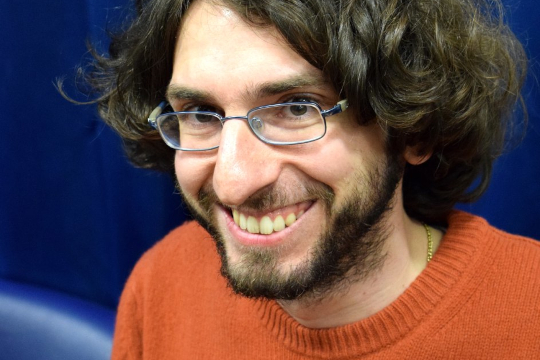Giovanni Paolini, Associate Professor of Geometry at the Department of Mathematics of the University of Bologna since 2023, is one of the winners of the 2025 Frontiers of Science Award, granted by the “International Congress of Basic Science” for his work with Mario Salvetti (University of Pisa): “Proof of the K(π,1) conjecture for Affine Artin groups”, published in Inventiones Mathematicae, vol. 224(2), pp. 487–572.
Although recently established, the award has already gained significant international recognition. It highlights 148 papers produced in recent years that represent major advances in the fields of pure and applied Mathematics, Theoretical Physics, Computer Science, and Statistics. The ICBS is funded by various institutions of the People's Republic of China. The award ceremony will take place in July in Beijing.
The K(π,1) conjecture, solved by Paolini and Salvetti, emerged in the 1960s from the works of Vladimir Arnol’d, Egbert Brieskorn, Frédéric Pham, and René Thom. A detailed description of the context of this conjecture can be found in:
Brieskorn, E.: Sur les groupes de tresses [d’après V. I. Arnol’d]. Séminaire Bourbaki, vol. 1971/72 Exposés 401, 23 pages.
Artin groups, generalizations of the well-known braid group, form an important class of groups that play a central role in various areas, including mathematical physics, singularity theory, and representation theory. Each Artin group is naturally associated with a topological space (the complement of a hyperplane arrangement).
Paolini and Salvetti provided a definitive answer to the question, in the affine case, of whether all the higher homotopy groups of this space are trivial. In other words, they proved that its universal cover is contractible. Essentially, the question asks whether all the topological complexity of this space is encoded in the algebraic properties of the associated Artin group. This is a very natural question from both a conceptual and aesthetic perspective, suggesting a deep harmony between the combinatorial algebraic objects (Artin groups) and the associated topological spaces.
In the early 1970s, Pierre Deligne, one of the most influential mathematicians of our time, proved this conjecture for certain particularly significant Artin groups in his paper Les immeubles des groupes de tresses généralisés, Invent. Math. 17(4), 273–302 (1972). His work introduced methods and ideas that have since become standard and gave a significant impetus to the study of this problem.
Other particular cases were later settled by various mathematicians, culminating in the work of Paolini and Salvetti. Their proof is particularly notable for being essentially “case-free,” in the sense that it gives a single argument which works for every affine Artin group. Their conceptually and technically demanding proof also provides several new results on the combinatorics of Artin groups, which are of independent interest beyond the conjecture itself.
Inventiones Mathematicae, the journal in which the paper was published, is among the most prestigious in Mathematics, having featured numerous landmark papers in the field.
Giovanni Paolini, born in Pavia in 1991, won a gold medal at the International Mathematical Olympiad in 2009. He studied at the Scuola Normale Superiore, earning a Ph.D. in Mathematics with a dissertation on the topology and combinatorics of affine reflection arrangements. His scientific interests include not only combinatorics, group theory, and topology but also more applied topics such as machine learning, especially deep learning and natural language processing. He has held positions as Applied Scientist and Senior Applied Scientist at Amazon Web Services and was a visitor at the California Institute of Technology in Pasadena.
The entire Department congratulates him on this prestigious recognition.
